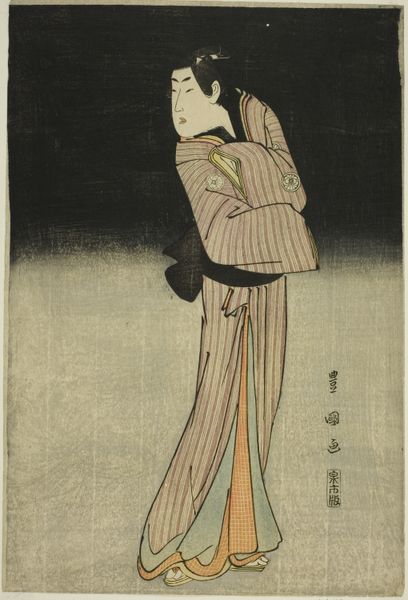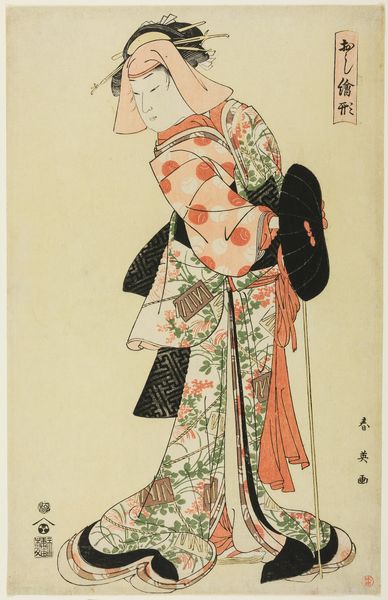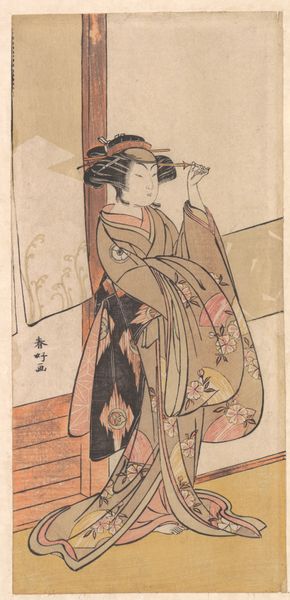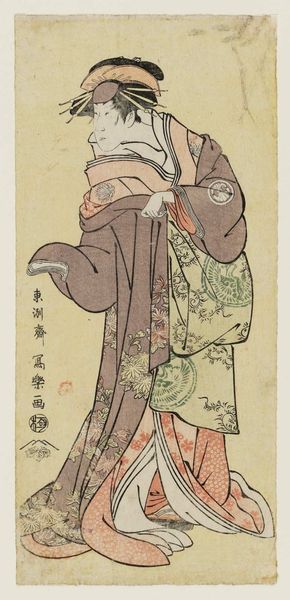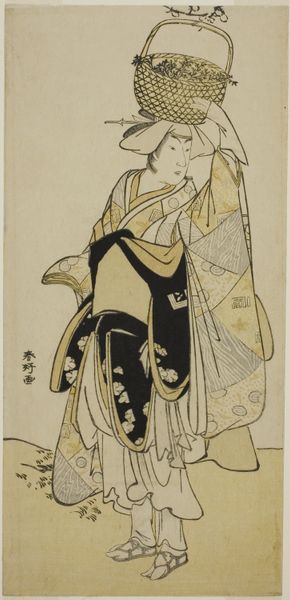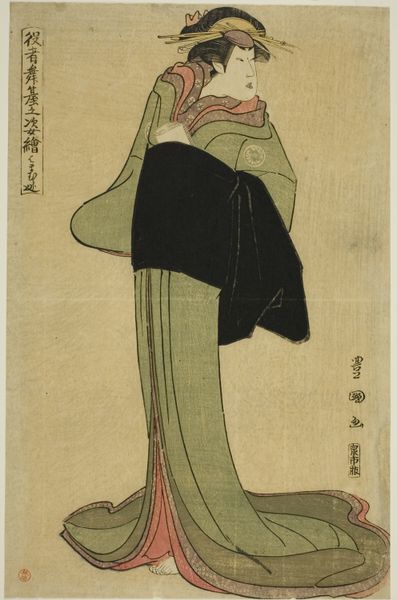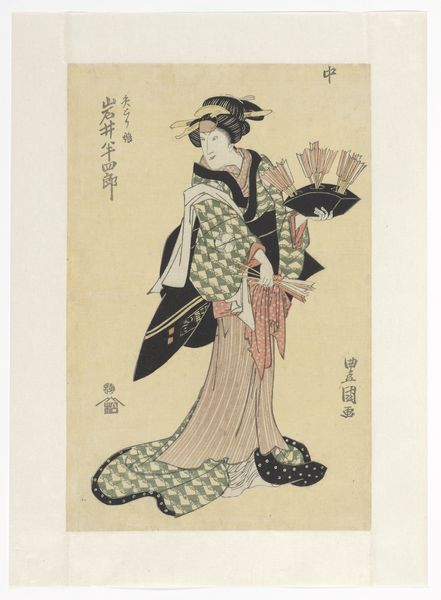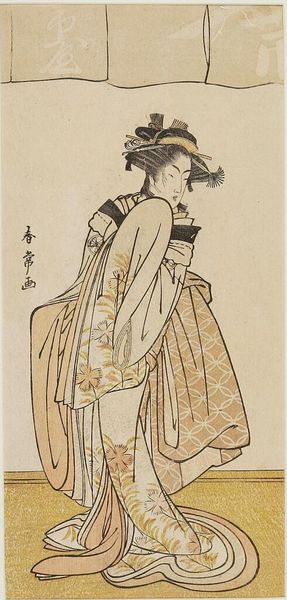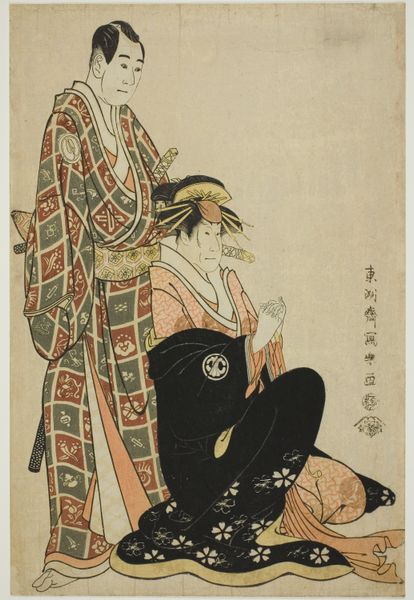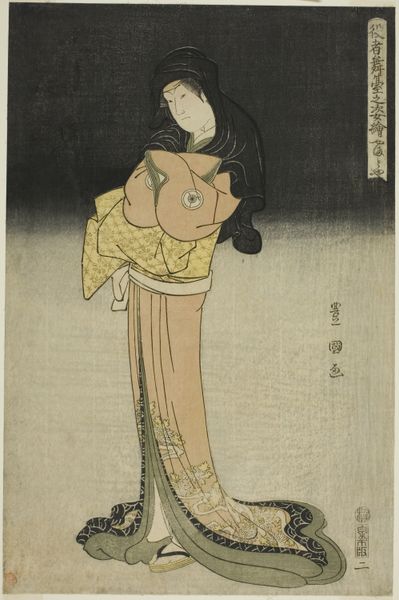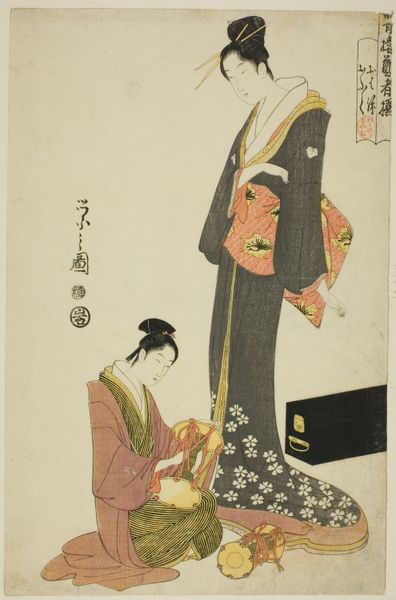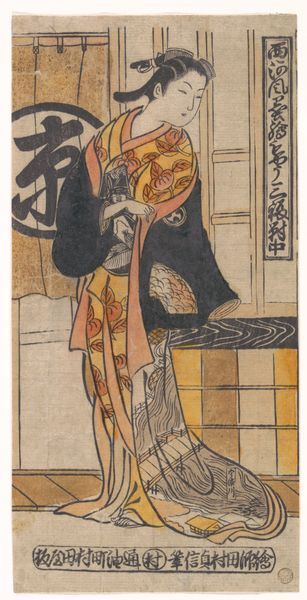
silk, print, woodblock-print
#
portrait
#
silk
# print
#
asian-art
#
ukiyo-e
#
figuration
#
historical fashion
#
woodblock-print
#
sketchbook drawing
#
watercolour illustration
#
genre-painting
#
erotic-art
Dimensions: height 391 mm, width 262 mm
Copyright: Rijks Museum: Open Domain
Curator: Here we have Utagawa Kunisada’s "Het Tamaya restaurant in Kameido," a woodblock print likely created between 1820 and 1825. It’s currently housed at the Rijksmuseum. What's your first take on it? Editor: Immediately, I’m struck by the elegant verticality. The figure’s pose, combined with the delicate linework, draws the eye upward, while the muted color palette imbues it with a sense of quiet refinement. Curator: Indeed, and if we look closely, we see a portrait that encapsulates much about the ephemeral culture of the era—the "floating world," as it was known. It shows the subject meticulously putting on makeup. A mirror on the left shows what seems to be the same women having some kind of gathering around the exterior. Do you agree with the perspective and theme of ephemeral culture and Ukiyo-e? Editor: I do agree it is definitely related to Ukiyo-e for it´s colors and strokes; however, focusing on the form of the piece, I find intriguing how the soft tones contrast to that bold outline. It serves to really highlight the shape of the character, and contrast the flatness of the paper with the volume that the curves of the kimono communicate. Curator: That’s a keen observation. Those curving lines, rendered with such deliberate control, do create an illusion of three-dimensionality. Ukiyo-e prints weren’t just decorative; they captured aspects of cultural memory that were crucial to social identity, in this instance. What messages could we see within this type of piece? Editor: I would argue this aesthetic emphasis amplifies the image’s sensuality. The composition invites us to explore this contrast and understand what´s hidden in the dark robes in contrast to her skin, perhaps, inviting us into something unknown and private, like her getting ready in privacy. Curator: A lovely point. It seems Kunisada, consciously or not, captured an intimate ritual—a performance within a performance. Editor: Precisely. I also enjoy the balance Kunisada achieves. It creates this stillness, like time stands frozen—and gives us an aesthetic meditation, it has nothing to do with a literal story as might seem. Curator: It's a fascinating glimpse into a world both exquisitely beautiful and intensely constructed. Editor: Yes, by diving in this image we got the chance to see, the perfect meeting between symbolism and representation to achieve timeless beauty.
Comments
No comments
Be the first to comment and join the conversation on the ultimate creative platform.
